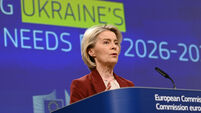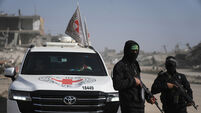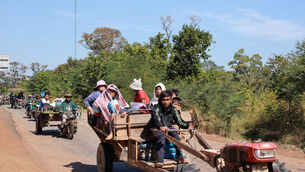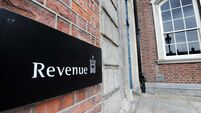Bangkok shrine bomber 'not acting alone'
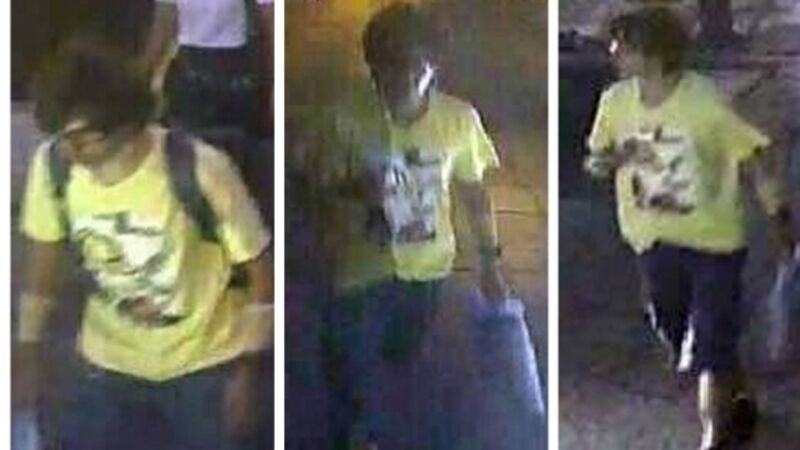
Thai police say the bomber who is being hunted over the explosion that killed 20 people at a Bangkok shrine did not act alone.
National chief of police Somyot Poompanmoung said “he didn’t do it alone for sure – it’s a network”.
Investigators believe a man seen in security video wearing a yellow T-shirt and carrying a backpack set off the explosion.
Police have released several photos of the man, with and without the backpack, and are asking the public to provide information about him.
The Erawan Shrine reopened to the public, with a stream of people arriving to kneel in prayer, light incense and lay flowers.
Buddhist monks in saffron robes joined members of the public to chant prayers at the popular Hindu shrine.
Among those who paid respects was an office worker, Nuansupha Sarunsikarin, who expressed shock and sadness over the attack, which no one has claimed responsibility for.
“I’m depressed for those innocent people who had to pay for something they’re not involved with and now have no chance to live their lives,” he said.
Police said they had no doubt that the man seen in the video wearing a yellow shirt and carrying a large backpack was responsible for the attack.
“The yellow shirt guy is not just the suspect – he is the bomber,” police spokesman Lt Gen Prawut Thavornsiri said.
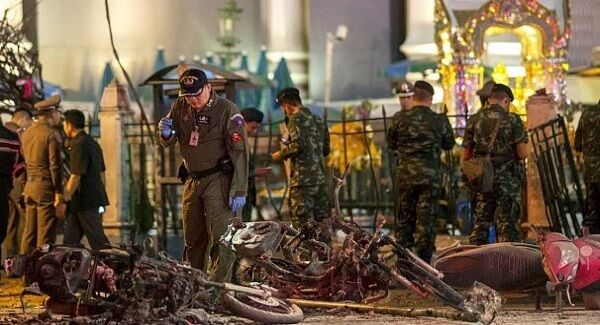
Prime Minister Prayuth Chan-ocha called the shrine bombing that also wounded more than 120 “the worst incident that has ever happened in Thailand” and promised to track down those responsible.
“There have been minor bombs or just noise, but this time they aimed for innocent lives,” he said.
“They want to destroy our economy, our tourism.”
Police released several photos of the prime suspect on social media. The images were apparently taken from closed-circuit video at the shrine before the bomb exploded.
Video posted separately on Thai media appeared to show the same man sitting on a bench at the shrine, taking off the backpack and leaving it behind as he walked away.
The bomb, which police say was made from a pipe, went off about 7pm local time on Monday in an upmarket area filled with tourists, office workers and shoppers.
On Tuesday, Bangkok was rattled by a second blast at a popular ferry pier, which caused no injuries.
The second blast at the Sathorn Pier frequented by river ferries and tourist boats was also caused by a pipe bomb and could be related to the shrine attack, police said.
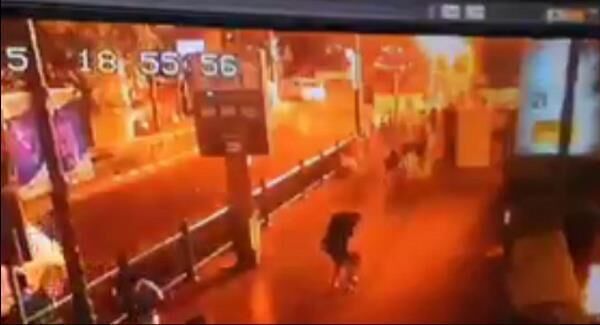
The bomb was thrown from the Taksin Bridge and fell into the Chao Phraya River, where it exploded. Security video showed a sudden blast of water over a walkway at the pier as bystanders ran for safety.
The Erawan Shrine is dedicated to the Hindu god Brahma, but is extremely popular among Thailand’s Buddhists as well as Chinese tourists. Although Thailand is predominantly Buddhist, it has enormous Hindu influence on its religious practices and language.
Thai authorities identified five victims as Thai and four as Chinese – two of them from Hong Kong – along with two Malaysians and one Singaporean, and said the nationalities of the other eight victims remained unknown.
Thailand has suffered many violent attacks in recent years, particularly in a decade-long insurgency by Muslim separatists that has killed over 5,000 in the country’s south. Those attacks have never reached the capital, however.
Bangkok has seen politically charged violence in the past decade. In 2010, more than 90 people were killed over two months in protests centred on the same intersection where Monday’s bomb went off. But none of those attacks included a bomb that seemed intended to produce mass casualties.
Bangkok has been relatively peaceful since a military coup in May last year after months of sometimes violent protests against the previous government.
At the same time, the military government has tightly controlled dissent, arresting hundreds of its opponents and banning protests. Tensions have risen in recent months, with the junta making clear it may not hold elections until 2017 and wants a constitution that will allow some type of emergency rule to take the place of an elected government.
Several countries have issued travel warnings since the bombing. The US Embassy in Bangkok advised citizens to avoid the shrine’s area. The Hong Kong government raised its travel alert for Bangkok to “red,” urging its citizens to avoid nonessential trips to Thailand.
New Way Travel, a Bangkok-based agency that caters to Hong Kong tourists, said all its tour groups scheduled to arrive in coming days had cancelled.
Police said later that they had called two or three people for questioning as they search for the main suspect.
Lt Gen Prawut said an arrest warrant for the unidentified suspect would be issued soon, adding: “Hopefully he is still in Thailand.”
He said others wanted for questioning are also seen in the security footage from the shrine.
Mr Somyot said anybody in the security footage around the time of the blast would be considered a suspect.
He added that there must be some Thai nationals involved, and officers are not certain that the man in the video is a foreigner and he could have been in disguise.
Prime minister Prayuth Chan-ocha appealed to the main suspect to surrender, claiming ``he might get killed to stop him from talking''.
Mr Prayuth told reporters: “If the person wants to be safe, he should turn himself in. Officials will find a legal way to provide him with safety. It’s better than living in hiding. It would make his life miserable.”
He added: “I want to tell those close to the suspect to tell him to come to police, whether you are in the same network or not, because he might be in danger.”







